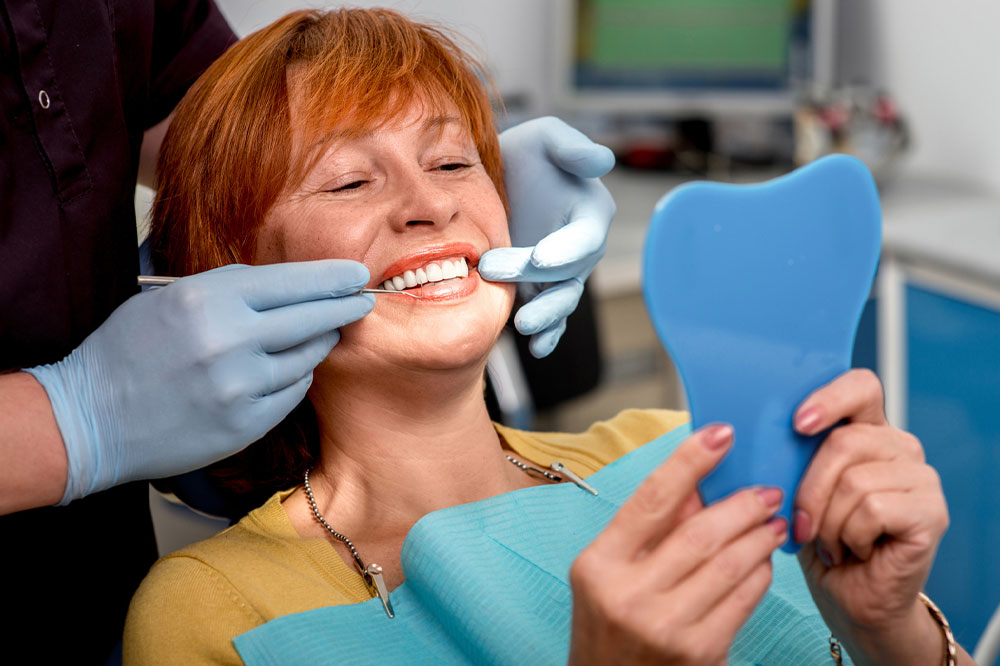12 Care Tips to Follow After a Dental Implant Procedure

Dental implants are artificial replacements for missing teeth. Many people who lose their teeth due to a disease or an accident opt for the procedure. The dental surgeon attaches the implants in the place of the missing teeth using screw-like equipment, restoring an individual’s ability to chew. If your dentist has prescribed a dental implant or you have just undergone the procedure, here are some easy tips to follow to care for your new teeth.
Avoid foods that are difficult to chew
Foods such as nuts, crackers, chips, and hard-crusted bread are difficult to chew and can aggravate a toothache. So, it helps to replace these with soft, easy-to-chew options like boiled rice, mashed potato preparations, porridge, cereals, soft bread, and tender fruits like bananas. You can tweak your existing meal plan to incorporate more such foods that can be swallowed without chewing a lot.
Practice oral hygiene
You must make a special effort to care for your teeth after a dental implant procedure to avoid problems in the future. Brushing twice daily and gargling after every meal helps strengthen the teeth and remove tiny food particles trapped between them. It is also essential to care for your tongue and gums to prevent harmful bacteria from thriving inside the mouth and spreading infections.
Floss regularly
You do not want to suffer from gum damage or tartar development after getting an implant, as they can cause further discomfort and eventual tooth decay. Flossing is an essential part of oral health that helps avoid such issues. It is advisable to floss daily or at least on alternate days.
Use a toothbrush with soft bristles
Toothbrushes with hard bristles can hurt the teeth and gums, mainly when your teeth are sensitive after the implant procedure. So, use a soft-bristled toothbrush, preferably one made of nylon. It will be gentle on the teeth and gums and may reach inaccessible corners.
Go for regular dental checkups and cleanups
Getting your teeth examined regularly is essential to ensure no new conditions develop and your implants remain strong. A dental checkup is advisable at least once in six months or more frequently if you experience pain or discomfort. Getting the teeth professionally cleaned once in six months is also essential to avoid decay and remove plaque and other particles that cannot be eliminated by brushing.
Choose calcium-rich foods
Calcium helps strengthen the enamel and prevent cavities, eliminating further dental health problems and tooth decay. Therefore, it is advisable to add calcium-rich foods to your food routine, such as dairy (or soy milk), fish, almonds, leafy greens, beans, figs, and yogurt. Do not forget to include vitamin D-rich foods as well, as the nutrient helps with calcium absorption.
Avoid sugar
Sugar is among the primary contributors to cavities and tooth decay. Thus, limiting sugar intake is a priceless piece of advice most dentists give their patients. It helps to replace sugar and sweet products with natural, plant-based sugars like fruits and certain vegetables. Ensure to brush your teeth or gargle thoroughly on the rare occasion you enjoy a sugary treat.
Stay hydrated the right way
Water helps keep the mouth clean and prevents cavities. It is recommended to drink two to three liters of water daily for overall health and well-being. Soups and smoothies without sugar are also healthy liquids. But avoid aerated and sugary drinks; you may consider replacing them with diluted fresh fruit juices.
Avoid anything that can trigger corrosion
Products like baking soda and sodium or stannous fluoride, although generally healthy for the teeth, can trigger corrosion in people with sensitive or brittle teeth. Thus, individuals with dental implants should avoid them. Such products can irritate the teeth and gums and exacerbate existing dental issues.
Choose nutritious foods
You may have to restrict yourself to ice-cream and cold foods for a brief period after the procedure as per the dentist’s instructions. As a result, you may risk missing out on essential nutrients. To replenish your body with essential nutrients, it is advisable to include wholesome foods rich in iron, calcium, vitamins, minerals, and proteins in the nutrition plan. Try to gain as much nutrition as possible from your food sources. You may consult a nutritionist and explain your situation to chalk out a definite food routine.
Opt for head massages in case of headaches
Headaches are common for a few days after an implant procedure. They can disturb your sleep and lead to a loss of appetite. Appointing a professional for head massages can help soothe your mind and head, facilitating better sleep and mental well-being.
Avoid acidic foods
Highly acidic foods and beverages like tea, coffee, tangerines, lemon, and soft drinks can irritate the teeth, particularly after getting dental implants. It helps to avoid such foods for at least a few days till the side effects of the procedure subside.
Dental implantation is a major procedure requiring plenty of care and a healthy lifestyle, especially in the initial stages. Many dentists administer all-on-4 dental implants, wherein only four screw-like prosthetics support the entire set of new teeth on one jaw. This process is particularly effective for individuals with gum disease and injured or broken teeth. Before undergoing a dental implant, it is advisable to check the dental implant cost and choose an affordable dental implant procedure that strikes the right balance between effectiveness and price. Denture implants and full-mouth dental implants cost more as they replace most or all damaged teeth. Irrespective of the implant type, basic oral hygiene and proper nutrition can facilitate a speedy recovery.






